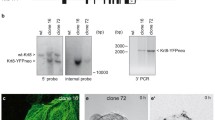Abstract.
Intermediate filament proteins form an essential part of the cytoskeleton and provide topological order to cells and tissues. These features result from their intrinsic property of self-organization and their response to extrinsic cues. Keratins represent the largest subgroup among all intermediate filament proteins and are differentially expressed as pairs of type I and type II intermediate filament proteins in epithelia. Their primary function is to impart mechanical strength to cells. This function is illustrated by patients with keratin mutations and by gene-deficient mice. Additional functions include their participation in the response to stress, cell signalling and apoptosis, and thus the keratin cytoskeleton appears far more dynamic than previously anticipated. This may result from hyperphosphorylation and possibly from interaction with associated proteins. How signalling networks affect keratin organization, turnover and function and vice versa will be a major challenge for future investigations.
Similar content being viewed by others
Author information
Authors and Affiliations
Additional information
Received 6 June 2002; accepted 3 July 2002
RID="*"
ID="*"Corresponding author.
Rights and permissions
About this article
Cite this article
Kirfel, J., Magin, T. & Reichelt, J. Keratins: a structural scaffold with emerging functions. CMLS, Cell. Mol. Life Sci. 60, 56–71 (2003). https://doi.org/10.1007/s000180300004
Issue Date:
DOI: https://doi.org/10.1007/s000180300004




